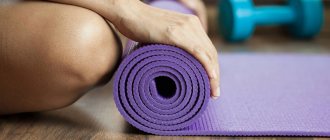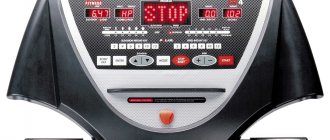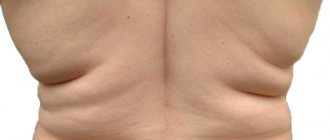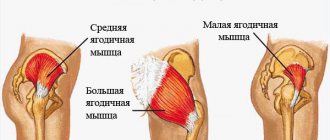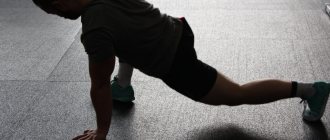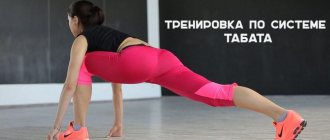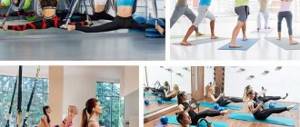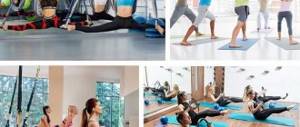Hello, dear readers!
Have you always wanted to start doing yoga, but didn't know where to start? Improve your health, lose weight, improve your emotional state - all this is possible by doing yoga!
And in this article we talk about yoga for beginners: we introduce you to this ancient practice, talk about the benefits, contraindications and basic rules of classes for beginners, and also offer an initial set of exercises. Using our tips and recommendations, even a beginner will be able to start practicing yoga today, improving their well-being and state of mind.
What is yoga?
The issue of health is a fundamental aspect in human life. There are many healing methods, various types of diets, gymnastics, and among them, centuries-tested yoga occupies a worthy place. This is the best practice, by doing which, even at home, you can improve not only your physical well-being, but also find peace of mind.
It is generally accepted that yoga appeared in India around the 6th century BC. and it is the oldest practice of shaping the limitless capabilities of the human body and improving the soul. The main elements of yoga are: pranayama or various breathing exercises, asanas - all kinds of static body positions and meditation in a state of complete relaxation.
This is not just gymnastics, but a unique philosophical attitude to the world, a certain way of life. Serious yoga classes, along with the study of asanas and breathing principles, require the renunciation of some of the benefits of civilization, proper nutrition and a change in one’s life principles.
Despite the fundamental basis of yoga, anyone can begin to master asanas at home from scratch. And having learned more about the benefits of this Indian technique, many will want to start yoga classes as soon as possible.
What are the benefits of yoga?
For the best effect, you need to do yoga regularly, devoting several hours a week to this activity. And then positive changes in the body will not keep you waiting. Literally after a couple of weeks of practice you will be filled with vital energy, and after 1-2 months of practice your well-being will noticeably improve.
Yoga is gaining an increasing number of followers due to such healing effects and positive effects on the psychophysical state of a person:
- Improving the condition of the cardiovascular and respiratory systems. Intensive breathing in combination with the exercises performed helps to cope with diseases of the bronchi and lungs, and strengthens the heart muscle.
- Increased endurance of the body. Simple exercises are gradually complemented by more complex asanas, strengthening the whole body.
- Strengthening the spine and the entire musculoskeletal system of the body. Correct posture, absence of back pain, elasticity of joints and muscles - this is not a complete list of the positive effects of yoga.
- Improving metabolism and the condition of the immune and lymphatic systems. Even by working out at home, you can improve metabolic processes in the body and get rid of excess weight. Thanks to meditation and some asanas, immunity increases.
- Psycho-emotional stress is reduced. During yoga classes, the level of serotonin (the hormone of happiness) increases. This helps to cope with depression, the practitioner’s mood improves, and his state of mind improves.
Along with the above, yoga also helps to rejuvenate the body, improve coordination, and reduce blood pressure and blood sugar levels.
Contraindications to yoga. What does a beginner need to know?
Anyone can practice yoga, but for some diseases it is worth consulting with your doctor before practicing. This will help avoid negative consequences and complications. Perhaps an individual yoga program will be drawn up.
For pregnant women with a term of more than 3 months, it is not advisable to continue classes. You should also not start performing asanas and breathing exercises if you have the following health problems:
- within a year after a heart attack or stroke;
- complex heart diseases;
- oncology problems;
- schizophrenia and other mental illnesses;
- severe injuries to the spine and joints;
- recent operations;
- the presence of a vertebral or inguinal hernia.
During yoga practice, observe yourself and evaluate how you are feeling. If you have a cold, or even more so if you have the flu, it is better to refrain from exercise until you have fully recovered.
When is the best time for a beginner to practice yoga at home?
Exercising at home requires high self-discipline from a person, so first of all, determine the time for doing the exercises. To begin with, with regular training, it will be enough to do yoga for 10-15 minutes every day. In the future, the duration of the training process can be gradually increased.
Each person has his own daily routine, for some it is easier and more convenient to do morning yoga, while for others, on the contrary, evening yoga is more suitable.
Basic stretching asanas are easier to perform in the late afternoon, so exercises before bed are often preferred. You independently determine the training schedule and can wake up, perform the morning complex, and train more complex poses in the evening.
Triangle Pose (Trikonasana)
From a standing position, increase the distance between your legs to one meter. Turn your right leg to the side. Extend your arms parallel to the ground and turn to your right side, keeping both legs straight.
Rotate your arms so that they are in line, moving in opposite directions. The abdomen remains open and the torso lengthens.
Yoga for weight loss at home: instructions for beginners and the simplest exercises (140 photos + video)- Yoga mat - how to choose the right optimal size and material for practice (75 photos + video)
Yoga for legs and buttocks - the best poses and exercises for losing weight and tightening muscles (110 photos and videos)
Basic principles and rules of classes
It will be useful to get several yoga lessons from an experienced master and, with his help, select a video with a training complex in order to understand how to practice it yourself correctly. This will help you understand the mechanism of performing asanas and take into account all the recommendations when training at home. If it is not possible to work with an instructor, then you can do it just fine on your own, following certain rules.
Having selected a complex for beginners, you can begin. Refrain from eating 1.5-2 hours before training, exercise on an empty stomach. All you need is a mat, although the exercises can be done simply on the floor barefoot. Yoga requires complete immersion and concentration. Don't be distracted by anything, practice in complete silence, watch your breathing and new sensations in your body and mind.
Before asanas, a warm-up is necessary. Light joint exercises or morning exercises will help warm up the muscles and tendons. Breathe evenly and calmly, do not take sharp inhalations and exhalations. While relaxing, perform all movements smoothly and slowly. The body should not be tense: knees and elbows are relaxed, shoulders are lowered, feel how the limbs are stretching.
Beginners should not force things and rush to master new poses. Adhere to the principle “from simple to complex.” Any bodily discomfort should be avoided. Pain in the spine is unacceptable; if it occurs, you need to stop the activity and possibly replace the exercise.
Forward lean
Assume half lotus pose. Next, raise your arms up and slowly lower your body with your arms raised towards your outstretched legs. Your palms should touch your toes and your forehead should rest on your knees. Maintain the pose for about 30 seconds.
Set of first exercises
It is better to start practicing yoga at home with a simple set of asanas. The exercises below will help prepare your body for future, more intense activities.
Asana “Tree” (Vrikshasana)
Stand up straight. As you inhale, at the same time smoothly raise your arms, stretching them upward as much as possible. Now move your straightened arms back behind your head, thereby opening your chest. Next, lift your bent leg and place your foot on the inner thigh of the other leg.
The asana helps develop coordination and a sense of balance, strengthens the spine and forms correct posture.
Asana “Child” (Balasana)
Slowly sit down with your buttocks on your heels, then lower your body onto your hips, stretching your arms forward. Eyes closed, breathing free.
This pose relaxes the muscles of the neck and back and calms the nervous system.
Asana “Downward Facing Dog” (Adho Mukha Shvanasa)
Get on all fours, palms at shoulder level, fingers pointing forward, and elbows straight. Inhale and exhale, then straighten your knees without bending your back. Place your head between your hands and move your heels towards the floor.
This asana is recommended for headaches, makes legs slimmer, stretches the muscles of the whole body, and is a prevention of spinal diseases.
Asana “Stork” (Padahastasana)
In a standing position, feet together, while inhaling, you need to raise your arms up. Exhale calmly and bend down, bending your body at the lower back. The palms should touch the floor, and ideally be placed under the feet. At the initial stage, you can slightly bend your knees.
This pose stimulates digestion, promotes brain activity, and will also make your legs more flexible.
Asana “Bow” (Dhanurasana)
Lie on the floor and, holding your ankles with your hands, inhale and lift your upper and lower body at the same time. In this position, make light movements, rocking back and forth.
This asana is recommended for the prevention and treatment of the genitourinary system and digestive problems. Well strengthens the back, abdominal and chest muscles.
Observe your sensations, focus on your inner state and enjoy the exercise!
Dog looking head down (Adho Mukha Svanasana)
Place your palms slightly wider than shoulder-width apart, point your toes and lift your hips into the air. The chest moves back to the hips, the head relaxes and hides with the hands. Roll your shoulders away from your ears, keep your knees bent, and begin to lift your heels off the floor one at a time.
Remember, it is important to keep your hips higher in this exercise rather than placing your feet completely on the ground. Perform 5-10 approaches.


